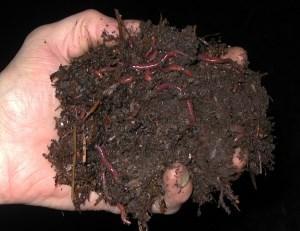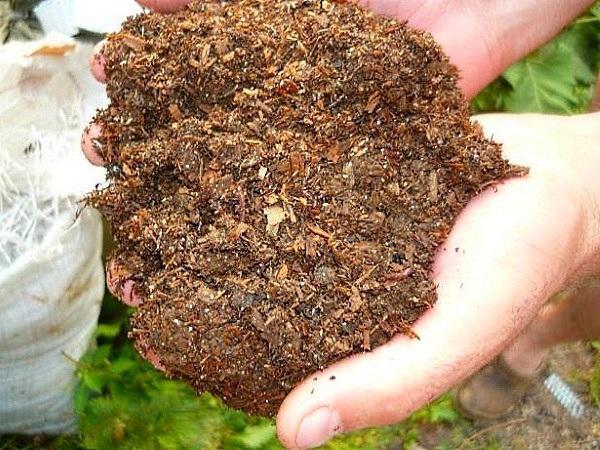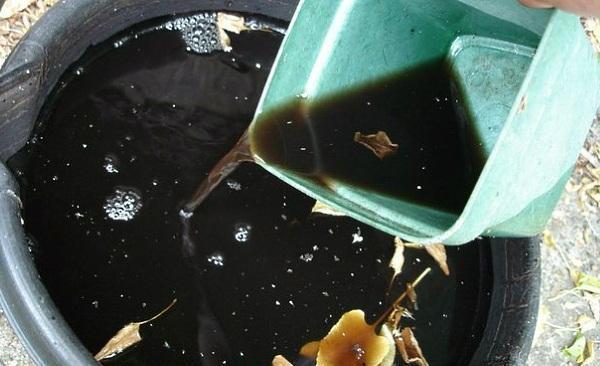What organic fertilizers are advisable in the country
 Absolutely all agricultural crops are demanding on the nutritional value of the soil, that is, on its fertility, since with each new harvest the soil is depleted and requires additional feeding.
Absolutely all agricultural crops are demanding on the nutritional value of the soil, that is, on its fertility, since with each new harvest the soil is depleted and requires additional feeding.
To restore the fertile properties of the soil, organic and mineral fertilizers .
The organic group is the main one in the pre-sowing period, it is organic matter that contributes to better seed germination and plant development.
But the mineral group is an auxiliary feeding element, which is necessary in cases where organic matter exhausts its potential.
Organic matter improves the natural and climatic properties of the soil, makes it loose and saturated with all the necessary substances and carbon dioxide, thereby accelerating microbiological processes in the soil structure.
Types of organic fertilizers
Manure as organic fertilizer
The simplest and most affordable type of organic fertilizers is manure... It is this element that increases the amount of useful and loose soil in the soil humus.
Manure is stored in order to obtain high-quality fertilizer in special piles, the layers of manure in which are covered with peat and straw.
If there are several species of animals in the household farm, then their mixed rotted excrement is the best way to fertilize the personal plot and agricultural land.
Peat and straw do not allow future fertilizer to evaporate in large quantities of nitrogen, which has an excellent effect on the future yield of all crops and vegetables.
The effective life of manure is three to five years.
Humus
No less effective organic fertilizer is humus, which is obtained from decomposed manure and plant foliage, the so-called compost... Most often it is used when growing vegetables, especially during the period of growing persistent and strong seedlings.

Liquid organic fertilizers
This type of fertilizer includes urine of animal origin and slurry, which is formed during the decomposition of manure. They are very rich in nitrogen and potassium.
 They are used in practice in a diluted form in a ratio of 1/10, where water predominates. Liquid fertilizers are especially useful for vegetable and fruit-berry crops. Basically, liquid fertilizers are applicable at the time of transplantation, ovary, flowering and fruiting.
They are used in practice in a diluted form in a ratio of 1/10, where water predominates. Liquid fertilizers are especially useful for vegetable and fruit-berry crops. Basically, liquid fertilizers are applicable at the time of transplantation, ovary, flowering and fruiting.
It is not recommended to use organic matter in liquid form in hot dry weather. The roots or foliage are fertilized by spraying with a sprayer. Fertilization is carried out in the evening.
Peat
This product is a structure of marsh plant residues that did not decompose in conditions of high humidity due to insufficient air penetration into the soil. The nitrogen content in peat is twice as high as in manure.

Bird droppings
 This organic fertilizer is mainly applicable for vegetable crops and potatoes. Litter is rich in nitrogen, phosphorus and potassium. Fresh bird droppings are stored mixed with peat or straw, after which they are dried and crushed into a powdery mass. It is used in the preparation of various fertilizing composts.
This organic fertilizer is mainly applicable for vegetable crops and potatoes. Litter is rich in nitrogen, phosphorus and potassium. Fresh bird droppings are stored mixed with peat or straw, after which they are dried and crushed into a powdery mass. It is used in the preparation of various fertilizing composts.
Green mass of legumes
Crops of the legume family are excellent nitrogen accumulators, therefore they are often used as organic fertilizers by plowing green mass, as a result of the decomposition of which the soil is enriched with nitrogen. This method of fertilization is especially widespread on sod-weakly podzolic soils.

Organo-mineral fertilizers
 Often at home, summer residents use not too concentrated organic matter, for example, ash, it does not include the required amount of nutrients and must be mixed with other organic components or minerals.
Often at home, summer residents use not too concentrated organic matter, for example, ash, it does not include the required amount of nutrients and must be mixed with other organic components or minerals.
The combination of mineral and organic elements creates the so-called organomineral fertilizers, otherwise they are called humic fertilizers.
In cases of improper soil care, this type allows you to put in the proper order the balance of the contents of all necessary nutrients in unfertilized and oversaturated soil covers.
Organo-mineral fertilizers are produced only after a thorough chemical analysis of the soil to be processed.
How to apply organic fertilizers?
Organic fertilizers in a liquid state are applied under the root system of crops and vegetables, and in the consistency of a powdery and crumbly mass, they are distributed over the surface of the soil, which is subsequently plowed or dug up. At home, a bayonet shovel is used for this, but in farms, an organic fertilizer spreader is used for this purpose.

Today it is not a problem to purchase fertilizers from horticultural supermarkets. It is on the purchased packages that the rates of application of organic fertilizers are always indicated. They should be adhered to, since fertilizers of the production type can be either single-component or complex, designed specifically for use for a certain type of crop.
Organic fertilizers are diverse. Products of plant and animal origin are considered organic. Ash is not organic. Minerals remain in it after the combustion of vegetation. You can get organic fertilizer without animal manure by composting. Manure is obtained by processing vegetation in the body with the help of bacteria. You can also treat the green mass with effective microorganisms in the compost. It turns out the same nutritional composition as in the animal product. Taking into account that the cost of manure is growing every year, it is more profitable to start your own production of organic fertilizer. During the summer and autumn, you can get twice the healing compost. For those who keep rabbits and use their bedding and nuts for fertilization, you need to know that this is a very strong mixture, and you need to be very careful when using fresh manure, it is better to use liquid feed. Avian guano is very effective in liquid infusions, especially when added to herbal infusions. Horse manure is the best substrate for fertilizing cucumber holes. Champignons grow well on it. The perennial sheep dung cake produced by the slabs when cleaning the sheepskin is the best mulch. It turns into dust, creates a loose layer, preventing the appearance of weeds.